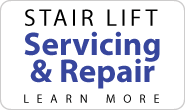 Platform lifts are an affordable and cost-effective alternative to elevators in many situations. They are much less expensive than elevators. This makes platform lifts a favorable option for seniors, wheelchair-bound persons and others with mobility issues.
Platform lifts are an affordable and cost-effective alternative to elevators in many situations. They are much less expensive than elevators. This makes platform lifts a favorable option for seniors, wheelchair-bound persons and others with mobility issues.
Elevator Or Platform Lift?
Those who need elevators often do not have the money for the elevator, much less the remodeling. An elevator almost always requires remodeling or even a built-on addition. So this means a traditional elevator costs somewhere in the neighborhood upwards of $10,000 in remodeling costs before money is spent on the elevator or its installation. This may mean a $20,000 total cost, which very few people can afford.
In contrast, a platform lift is generally $3,500 to $5,500 plus installation costs. If a platform lift will do the job, it is clearly the more affordable choice.
Platform lifts also require less energy output than elevators. Again, this saves the money and helps keep the lift within reach of a normal person's budget limits. Keeping energy use down is especially important in light of the current energy crisis and high electric rates.
Platform Lift
A platform lift is essentially an elevator that is self contained. It has four sides but is open on top. It has a completely contained lift motor and safety features that allow either the rider or a helper to operate it. It can carry two persons or one person in a wheelchair, up to 600 pounds. The lift has an entry door on one level and another door on the other level. When it reaches the new level, the safety door releases and a person can exit.
There is no danger in the rare case of a malfunction while in use. Since it is open to the air, the rider can be easily extracted. There is no danger from a fall as it cannot crash like an elevator. These facts can be very reassuring to those who must ride a lift every day.
Platform lifts are quiet. They don't create a noisy atmosphere. Elevators are often noisy especially as the unit ages. If an elevator is used at night, it may wake others in the household.
Elevator owners pay every year for inspection, parts and repairs to ensure safety. If a problem is found, it must be repaired immediately. Platform lifts, which are simpler to operate, require simple repairs but only if they break, which is rare.
Weather Resistant
With the installation of a weather resistant model, the platform lift can help a person to their front door even in inclement weather such as rain or snow. This makes it an obvious choice for outdoor uses. Most outdoor platform lifts come with specially designed covers that prevent moisture entry from damaging internal components, ensuring that these lifts will last as long as their indoor counterparts, provided they are properly maintained.
Drawbacks
One concern often voiced by prospective lift customers is that a platform lift will take up too much space. However, an elevator or ramp would take similar space away from other uses, and if a shaft has to be dug, it could also destabilize the structure in which it is placed, thus imposing further usage restrictions on the home or business. Ramps require a lot of square footage when installed at an appropriate grade, and for heights greater than 24 inches, a platform lift has a much smaller footprint.
Also, platform lifts are more likely to be used from five to eight feet heights. So an elevator might seem a better choice for moving a person from one home level to the next. However, stair lifts can be bought and installed for far less money, and can transport a mobility-impaired person in a simpler, more cost effective way. With no remodeling costs, platform lifts and stair lifts are much more affordable than elevators.
ALSO SERVING
Bartlett
Collierville
Jackson
Platform Lifts: An Alternative to A Residential Elevator
Call to Speak to an Expert

